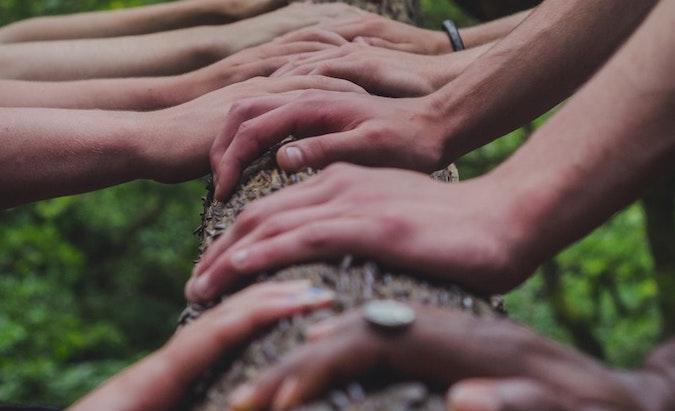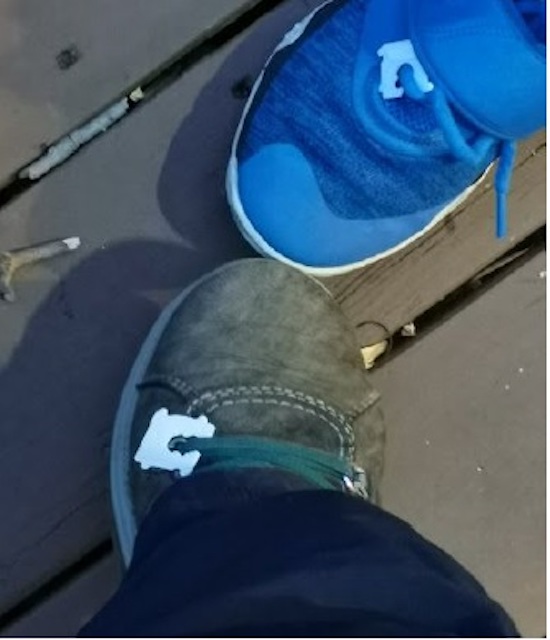
Cultivating a Swift Sense of Community
Study co-authored by Santa Clara assistant business professor shows how everyday artifacts can create an organization-wide sense of connection—even in temporary workplaces.
For many people, the nature of work is changing. More and more, temporary organizations—think gig economy jobs or project teams–are the new reality, leaving some employees feeling disconnected.
Yet, even in these workplaces, experts say feeling a deep sense of connection and community is still important for some. Afterall, research says cultivating a sense of community helps increase organizational commitment, as well as employee sense of empowerment and collaboration, while reducing turnover.
But how do you build long-term relationships in temporary organizations with groups of relative strangers who have limited shared work history and no expectation for future interactions? And not over a period of years, but within weeks—maybe even days?
A new study by two assistant professors of management—Manhattan College’s Reut Livne-Tarandach and Santa Clara University’s Hooria Jazaieri—contends that using a simple artifact or everyday object can mobilize strangers to create strong connections that lead to what the authors call a “swift sense of community.”
Their findings came from an unlikely source: a five-day summer camp for children coping with a parent’s cancer.
A novel strategy to relieve homesickness
Drawn from diverse locations in the Northwest, few if any of the 120 campers, ages 6 to 16, or the 50-member staff, knew each other before arriving. The camp’s mission is simple: help kids have a fun-filled time while they build connections with each other.
It was no surprise, however, when some of the campers began feeling homesick. After one particular camper seemed inconsolable, her counselor felt torn between wanting to be supportive of the camper and needing to support other campers in her unit.
Trying to resolve the tension, the counselor improvised a new solution. She gave the camper a bread tag to wear on her shoelaces as a reminder that the counselor was always thinking of her, even when the counselor was away. It turned a mundane item into a symbol of the close connection they shared.
The impact of the bread tag didn’t end there. It resonated with other counselors who also adopted the practice to support their own campers, as well as coordinate with other counselors who would now be alerted to campers’ distress by seeing the tags.

Bread tags on shoes. Photo courtesy of Reut Livne-Tarandach.
For homesick campers, the bread tags offered an immediate sense of community as they were sharing their vulnerability; soon those campers began asking their counselors if they could award bread tags (now scrawled with personalized messages) to other homesick kids.
Finally, homesick campers disseminated the bread tags not just to other homesick campers, but to campers and counselors who were distressed by other issues besides homesickness.
“It started by acknowledging distress in someone else, and so often in our society we try to avoid that conversation and try to avoid suffering,” says Jazaieri. “But, in fact, suffering can bring us closer together and can help us forge a sense of community with each other.”
As the authors explain, a single artifact had gone through four distinct stages, from initial resourcing (using a bread tag to bond with a camper); to embracing resourcing (staff members adopting the bread tags to better coordinate responses between each other and the campers who were dealing with a distinct type of distress); to reinterpreting resourcing (campers feeling acknowledged wearing their tags); to expanding resourcing (the bread tags symbolizing care for broad types of distress).
“It’s important to realize that this process is built on the power of lateral and bottom-up influence. It was the campers—not the top-down influence—who made the difference and re-interpreted the meaning of this artifact and transformed it into a symbol of organizational-wide care,” says Livne-Tarandach. “Their suffering was addressed, they see other people suffering, and they’re motivated to do something about it.”
Five key elements
While a summer camp is different from the average workplace, there are lessons from the bread tag process the authors contend can make employee communities stronger.
After conducting a qualitative study at the camp, building on 170 surveys, 120 interviews, and 73 observations, Jazaieri and her co-author say five key elements emerged from wearing the bread tags to help build the camp’s “swift sense of community”: membership, fulfillment of needs, influence, positive regard, and responsibility for others.
Practically any object, they note–from bread tags to colored pins, ribbons, stickers or badges–could be used as a way to help people bond, connect and build relationships—creating an ecology of care. Perhaps most importantly, it requires an openness and a willingness to be vulnerable.
As they note in their paper, creative use of materials that enable employees to connect has surfaced at much larger organizations, though over a longer period of time. For example, a handful of Google employees in 2016 launched Blue Dot. Using actual blue dot stickers on laptops and other work paraphernalia—later typed in emails—Blue Dot members alerted other Googlers that they were available to talk to employees about mental health.
The authors believe their study has wide-ranging applications to employees in multiple settings, including their own universities, given the epidemic of social disconnection and stress from the on-going global pandemic, as well as periods of social unrest, and uncertainty.
For example, they suggest that artifacts could be used to connect individuals during Black history month, women’s history month, or signify a campaign for mental-health awareness, symbolizing organizational allyship/support and responsibility to everyone’s well-being.
And while the business world is about performance and profits, says Jazaieri, “first, you have to start with people, starting with yourself, and then the people around you, and noticing when the person sitting next to you doesn't seem like they're doing okay. That means asking them how they are doing and actually listening for the response,” she says, adding that she and her students already practice this kind of active listening and communication in class.
What’s more, the authors say, cultivating a swift sense of community need not break the bank.
“A lot of times, we talk about how we can do tough things—when we’ll have the resources, when we’ll have more time, when we’ll have more money,” Livne-Tarandach says. “But sometimes, part of the solution depends on the creative use of resources at our disposal.”